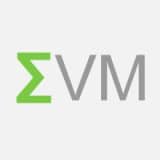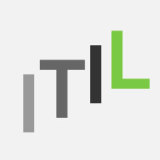PMI-ACP Tools and Techniques: Agile Communications

[PMI-ACP® Exam Study Notes] Communications is one of the ten Tools and Techniques for the PMI-ACP® exam. The “Tools and Techniques” accounts for a total of 50% of all the questions to be found on the exam paper. According to the PMI-ACP® exam content outline, communications include information radiator, team space, agile tooling, osmotic communications for co-located and/or distributed teams and daily stand-ups.
PMI-ACP® Exam Importance: around 3-6 questions (~5% of all questions)
PMI-ACP® Tools and Techniques: Communications
- [The Agile Manifesto] Individuals and interactions over processes and tools.
- [Agile Principles] Business people and developers must work together daily throughout the project / Build projects around motivated individuals / Agile processes promote sustainable development / Self-organizing teams / The team reflects on how to become more effective
- Important concepts:
- information radiator
- team space
- agile tooling
- osmotic communications for colocated and/or distributed teams
- daily stand-ups
- Information Radiator
- a communication tool that physically displays information to the Agile team/stakeholders in the work area in real-time
- prefer low-tech, high-touch approaches, e.g. primitive Kanban boards on walls
- displays the information team members need to know in the most visible and efficient manner
- everyone is responsible for retrieving and updating information of the information radiators
- a “pull” technology rather than “push” technology to retrieve information
- examples of information radiators:
- Kanban boards
- white boards
- bulletin boards
- burn-down/burn-up charts
- Team Space
- prefer co-location of team members for pro-active support, free discussion, open collaboration and osmotic communication
- ideally the team members should face each other
- the aim is to have team members working together in a close space while ensuring optimal personal privacy
- team space design
- co-located teams: no separate cubicles/walls/partitions, open workspace for team member to meet face-to-face for discussion, a dedicated war room/project room/scrum room with information radiators for the Agile team
- distributed teams: make use of virtual open workspace (instant messaging, text messaging, chat, virtual information radiators, etc.) and video conferencing. If feasible, gather team members physically together to kick off the project for effective communication.
- Agile Tooling
- tools for more effective communication (reduce roadblocks for collecting, maintaining and disseminating information)
- types: low-tech high-touch tools, digital tools
- low-tech high-touch tools are preferred:
- promote collaboration and communication
- everyone knows how to participate
- easy and fast
- low-tech high-touch tools are preferred:
- co-located teams:
- war room and/or a dedicated conference room: walls filled with information radiators like whiteboards, billboards, post-its, charts, task boards, etc.
- distributed teams:
- virtual shared space using digital tools:
- wikis website
- instant messaging – Skype, web conferencing, etc.
- online planning poker – an estimation tool of user stories
- card meeting – a brainstorming session using 3×5 index cards
- version control – a tool for version control for configuration management, e.g. CVS
- CASE tools: reverse engineering tools to generate codes from designs
- other Agile tools for building/configuring/deploying deliverables
- virtual shared space using digital tools:
- Osmotic Communications
- team members in a co-located space overhearing discussions/conversations of other members and extracting useful parts from the conversations through active listening
- each team member will be able to focus on their own work while processing information from the environment
- increased communication effectiveness
- Daily Stand-ups / Daily Scrum
- a daily communication and planning meeting in which Agile team members come together to briefly evaluate the health and progress of the iteration/sprint
- a time-boxed (~ 15 minutes) and focused meeting to be held at the same time, in the same place for all team members (stakeholders may attend but are not allowed to talk during the meeting)
- Each member answer the following 3 questions:
- What have you done since last meeting?
- What are you planning to do by next meeting?
- What impediments (obstacles) are impacting your work progress?
- discussion on how to remove the roadblocks should be done after the daily stand-up
- Daily Stand-up meeting is the final step in the Agile Project Planning Process including: Product Vision (every year), Product Roadmap (every 6-month), Release Planning (every quarter), Iteration Planning (every month), and Daily Stand-up (every day)
- pigs and chickens: pigs, usually team members with assignments for the iteration, are the ones who can speak and contribute while the chickens, usually other stakeholders, can only listen and observe
Summary: Agile Communications
This PMI-ACP® Exam Study notes touch upon one of the many tools and techniques of the PMI-ACP® exam syllabus – Communications. Communications knowledge includes information radiator, team space, agile tooling, osmotic communications for co-located and/or distributed teams and daily stand-ups.
Most Popular PMI-ACP Certification Articles
- Top 10 Tips to Prepare for the exam (I got all Proficient in my exam)
- How to Get 21 Contact Hours?
- Over 600+ FREE Quality Mock Exam / Practice Questions





 Hi, my name is Edward Chung, PMP, PMI-ACP®, ITIL® Foundation. Like most of us, I am a working professional pursuing career advancements through Certifications. As I am having a full-time job and a family with 3 kids, I need to pursue professional certifications in the most effective way (i.e. with the least amount of time). I share my exam tips here in the hope of helping fellow Certification aspirants!
Hi, my name is Edward Chung, PMP, PMI-ACP®, ITIL® Foundation. Like most of us, I am a working professional pursuing career advancements through Certifications. As I am having a full-time job and a family with 3 kids, I need to pursue professional certifications in the most effective way (i.e. with the least amount of time). I share my exam tips here in the hope of helping fellow Certification aspirants!





